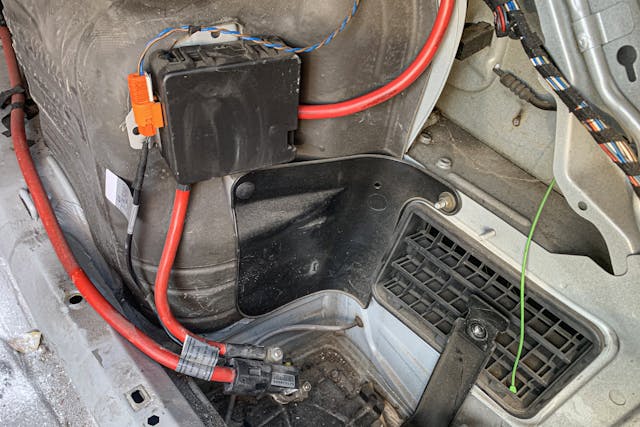6 junkyard parts to improve your project car
Keeping a vintage car on the road often means staying vigilant with maintenance for all of its mechanical components, plus taking scrupulous care of the delicate trim. A junkyard is often the best place to prowl for bits and baubles that are no longer available from the factory, but there are lots of other parts on other cars that are worth keeping an eye out for as well. So, if your well-stocked junkyard tool kit has allowed you to nab your target parts with time to spare during your next junkyard visit, consider poking around under hoods and in trunks. Here are six such useful items that could well save you some trouble with your next project upgrade.
Battery cables

If you’ve added electronic accessories and have upgraded your alternator for the extra power draw, consider upgrading the wiring and fuses to handle the extra current. Many BMWs from the early 2000s feature a trunk-mounted battery and use a robust cable to run to both the starter and alternator. This one, from an early 2000s 3-series, uses heavy-gauge wire and a 250-amp fuse, plenty for most off-road builds—even those that include a winch and extra lights.
Hardware

Mounting a Hi-Lift jack under your rear seat? Securing a gear rack or cargo net in the back of your SUV? Consider looking in trunks for screw-in anchors and in spare tire wells for thumbscrews that are used to secure space-saver spares. These can be picked up for pennies and save valuable fabrication time.
Fuse panels, relays, and mounts

’97–’01 Jeep Cherokees have an ample fuse panel with micro-fuses, maxi-fuses, and plenty of relays. Strangely enough, none of the Jeep’s factory relays were used for the headlights. Keep your eyes open for the fuse panels in the trunks of BMWs and Mercedes as well. This small power distribution block and maxi-fuse holder is from a Saab 9-3.

Lots of ‘90s GM vehicles use weather pack relays that are nicely sealed against dust and water. We’ve seen lots of neat brackets to mount small groups of relays as well, and they can be found in surprising places. The waterproof relays can usually be purchased new for just a few bucks, but the brackets to mount them can tidy up installs.

Another item to help clean up underhood accessory wiring is a common ground, or common power block. Throttle-body injection GMT 400 trucks have this beefy terminal mounted on the firewall with five lugs. Plenty for several accessories.
Hose clamps

Norma hose clamps can be found under the hood of lots of European cars from the ‘90s. The worm-drive clamps are tough and feature rolled edges to prevent damaging hoses.
Electric fans

Another favorite among off-roaders, electric fans can help low-speed cooling on rock-crawlers and free up horsepower by ditching archaic mechanical fans. Minivans and other front-wheel-drive cars are often a good source for strong, low-profile fans. Jeep builders have been touting the fans found in the Ford Taurus and ’94–’04 Ford Mustang, but identical fans can be found in plenty of other vehicles, including ‘90s Volvos.
Forced induction

Ambitious project car builders seeking boost on a budget can find both turbochargers and superchargers in ready supply at the junkyard. Diesel trucks are one source, and plenty of Saabs used a Mitsubishi turbo. Perhaps the most well-known junkyard boost remedy is the Magnuson M90 supercharger used on both Ford and GM 3.8-liter V-6s. Find them in Thunderbird Super Coupes and just about every top trim level GM FWD sedan from the late ‘90s to as late as 2009, including the Pontiac Grand Prix and Bonneville, Chevrolet Monte Carlo and Impala, Buick Park Avenue and Regal, and Oldsmobile Eighty-Eight.
Happy junking!


